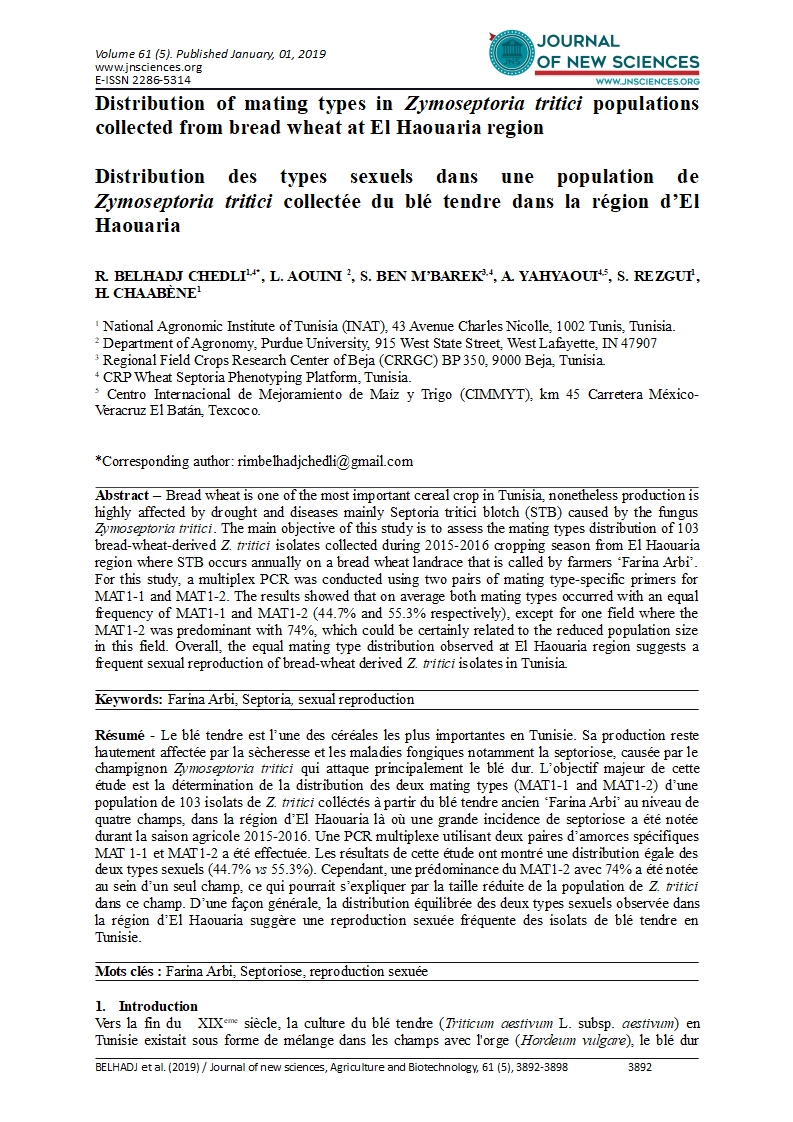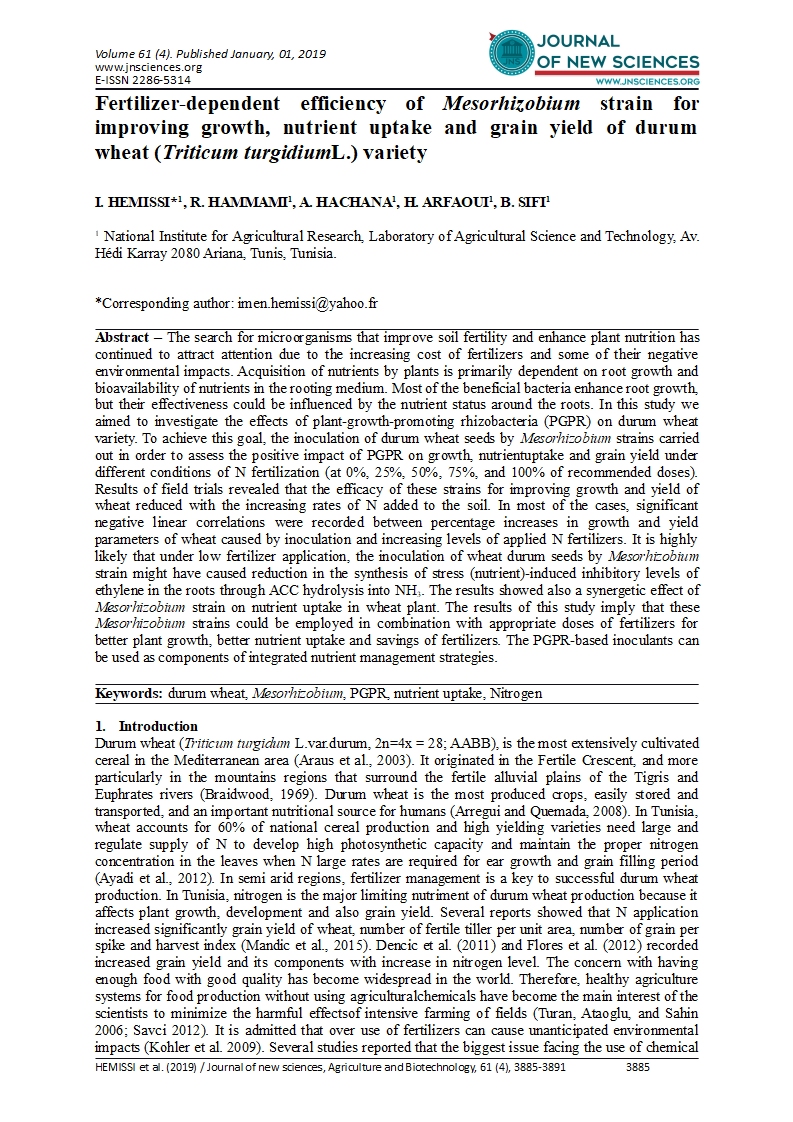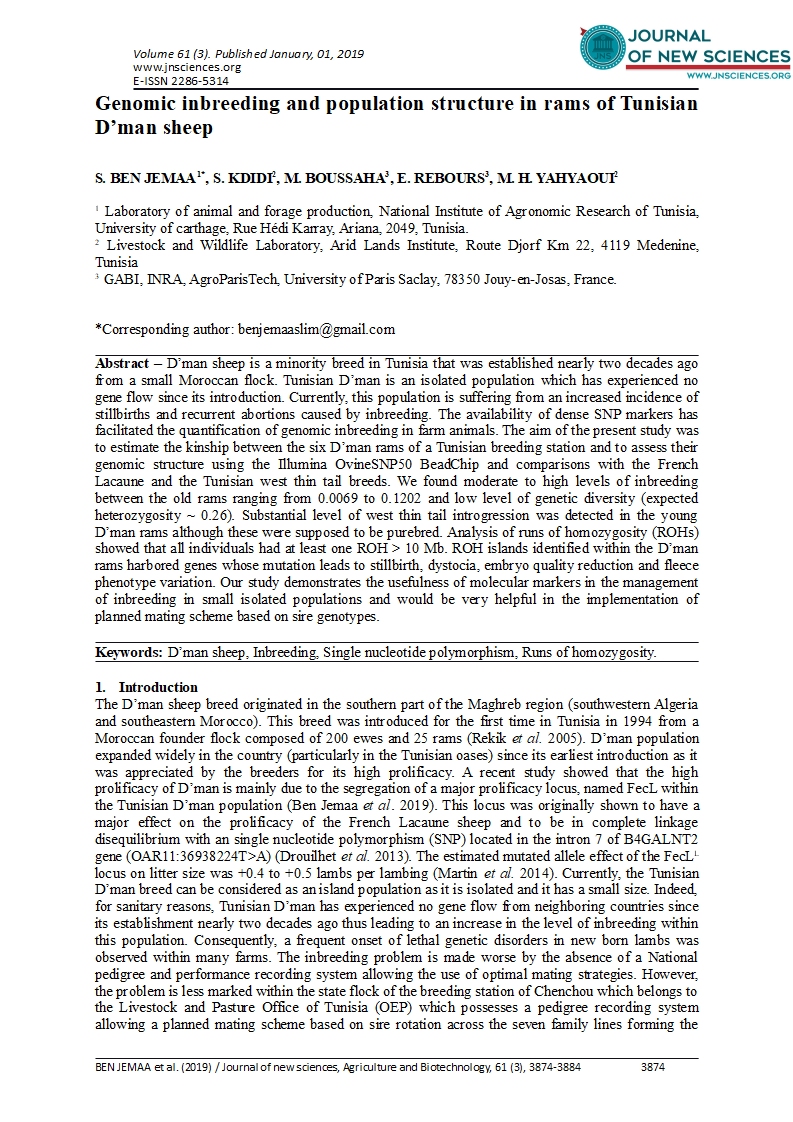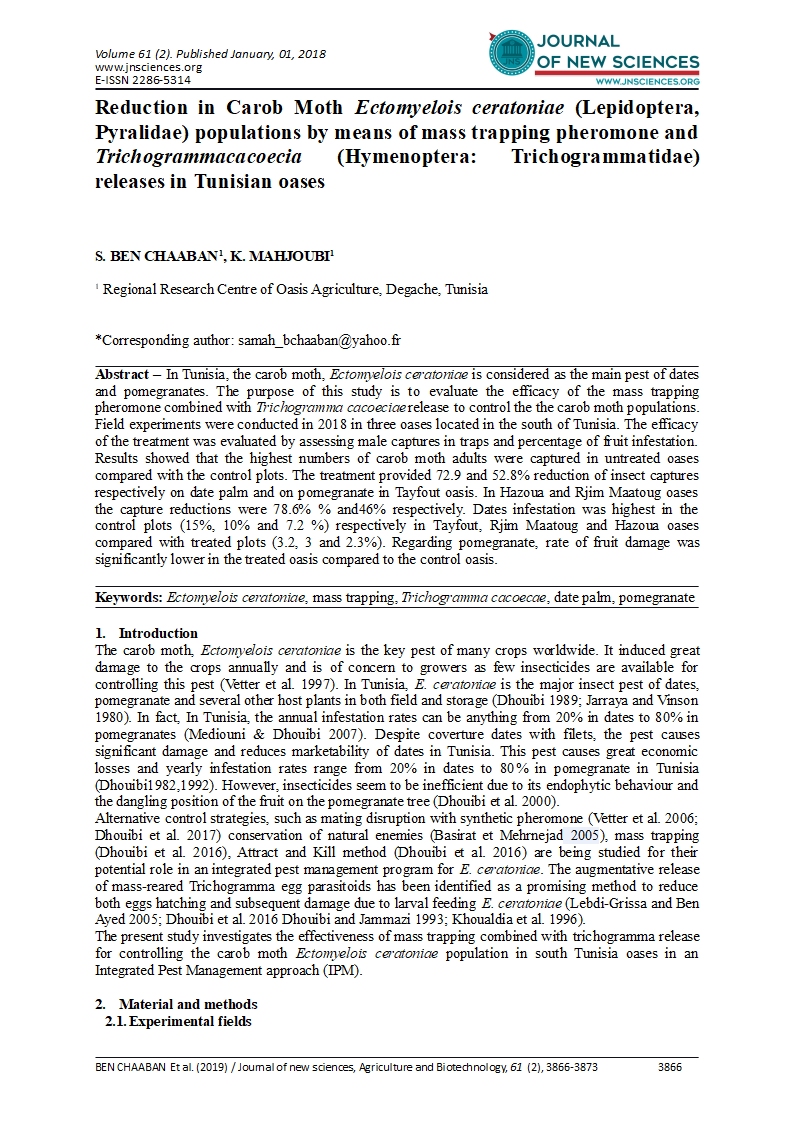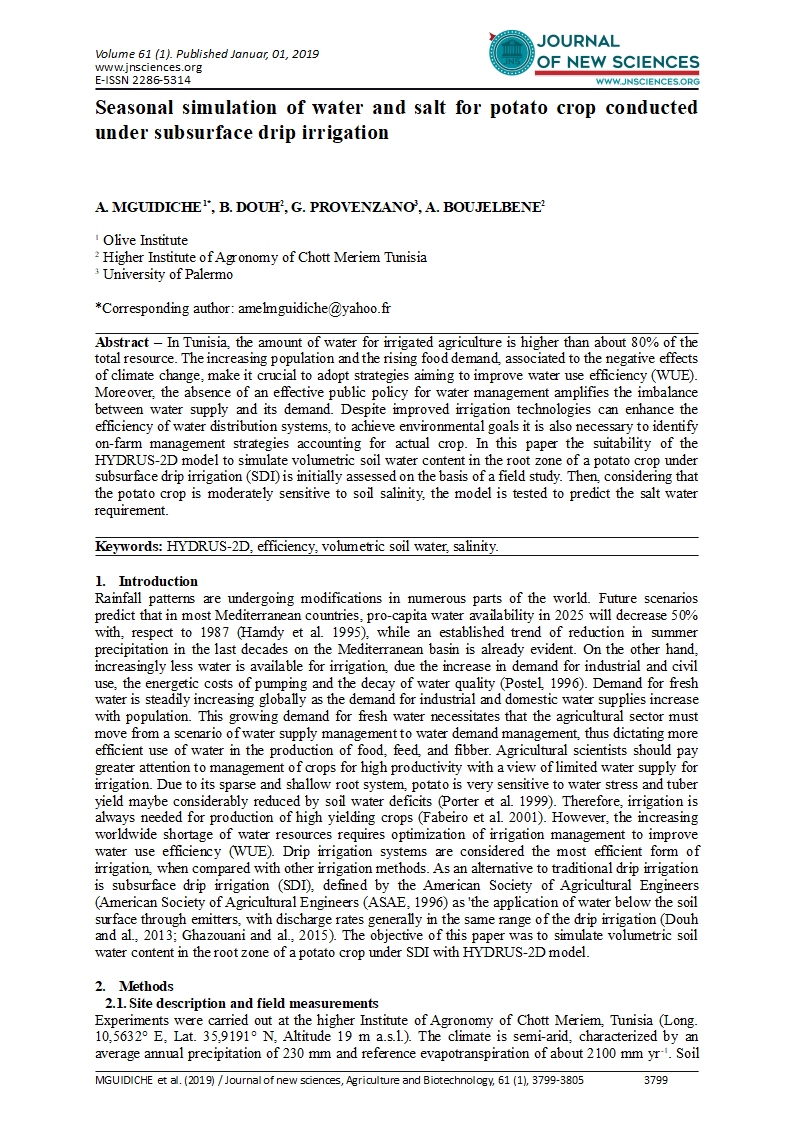- Category: Volume 61
- Hits: 5793
Morpho-physiological and anatomical responses of Cork Oak (Quercus suber L.) seedlings under shade and drought stress
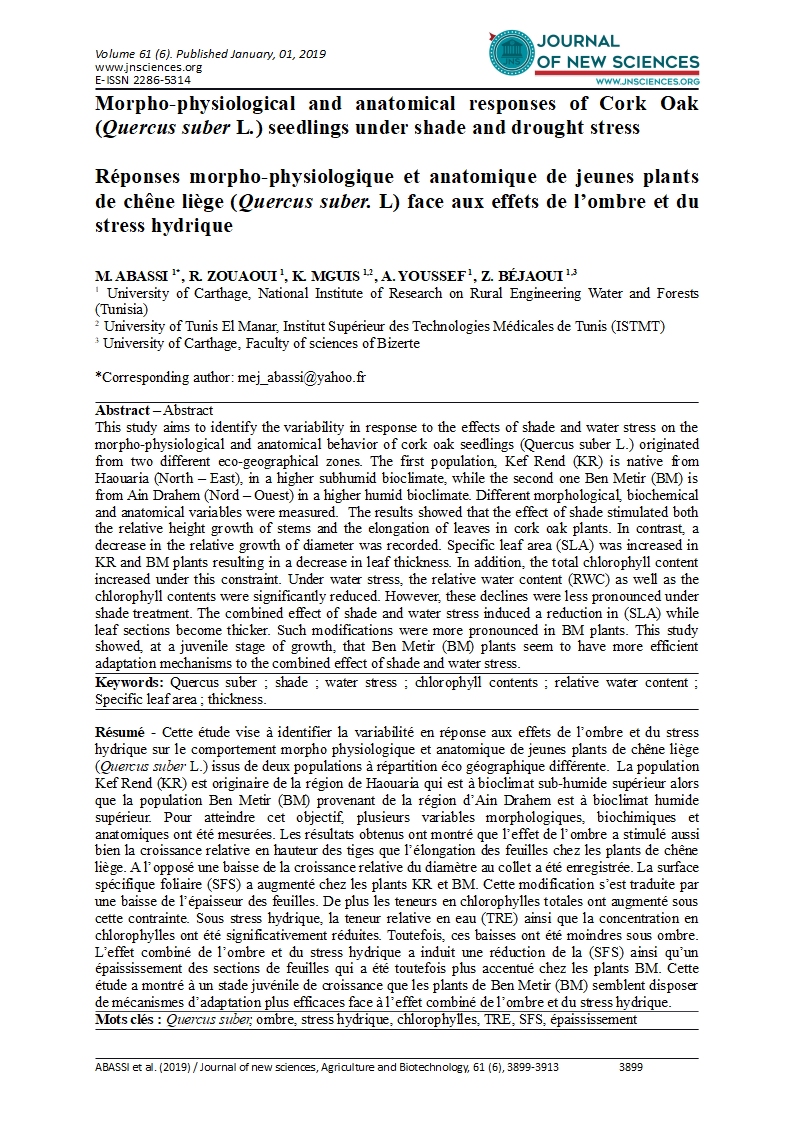
Réponses morpho-physiologique et anatomique de jeunes plants de chêne liège (Quercus suber. L) face aux effets de l’ombre et du stress hydrique
M. ABASSI 1
R. ZOUAOUI 1
K. MGUIS 1,2
A. YOUSSEF 1
Z. BÉJAOUI 1,3
1 University of Carthage, National Institute of Research on Rural Engineering Water and Forests (Tunisia)
2 University of Tunis El Manar, Institut Supérieur des Technologies Médicales de Tunis (ISTMT)
3 University of Carthage, Faculty of sciences of Bizerte
Abstract – This study aims to identify the variability in response to the effects of shade and water stress on the morpho-physiological and anatomical behavior of cork oak seedlings (Quercus suber L.) originated from two different eco-geographical zones. The first population, Kef Rend (KR) is native from Haouaria (North – East), in a higher subhumid bioclimate, while the second one Ben Metir (BM) is from Ain Drahem (Nord – Ouest) in a higher humid bioclimate. Different morphological, biochemical and anatomical variables were measured. The results showed that the effect of shade stimulated both the relative height growth of stems and the elongation of leaves in cork oak plants. In contrast, a decrease in the relative growth of diameter was recorded. Specific leaf area (SLA) was increased in KR and BM plants resulting in a decrease in leaf thickness. In addition, the total chlorophyll content increased under this constraint. Under water stress, the relative water content (RWC) as well as the chlorophyll contents were significantly reduced. However, these declines were less pronounced under shade treatment. The combined effect of shade and water stress induced a reduction in (SLA) while leaf sections become thicker. Such modifications were more pronounced in BM plants. This study showed, at a juvenile stage of growth, that Ben Metir (BM) plants seem to have more efficient adaptation mechanisms to the combined effect of shade and water stress.
Keywords: Quercus suber ; shade ; water stress ; chlorophyll contents ; relative water content ; Specific leaf area ; thickness.

